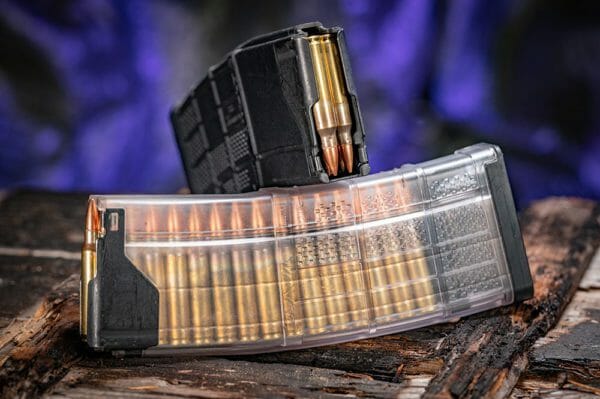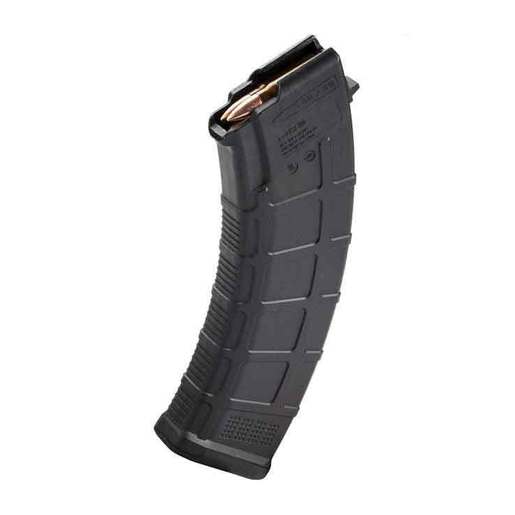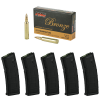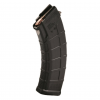
The Ninth Circuit Court of Appeals has stayed a Federal District Court Judge’s decision to issue a preliminary injunction against California’s magazine ban.
The case, Duncan v. Bonta, challenged the Golden State’s ban on magazines that hold more than ten rounds. The suit pre-dates the Bruen decision when it was named Duncan v. Becerra. In 2019, the same District Judge, Roger Benitez, issued an injunction against the magazine ban, which set off what was dubbed by the Second Amendment community as “Freedom Week,” where Californians could acquire magazines of all sizes. A week later, the injunction would be stayed pending appeal.
The Ninth Circuit Court of Appeals would rule for the State after the appeal. The Plaintiffs would file a writ of certiorari with the Supreme Court of The United States (SCOTUS) asking them to hear the case. The Bruen opinion was issued before the High Court could decide whether to grant cert. The landmark case vastly changed the landscape of Second Amendment cases.
Live Inventory Price Checker
 |
Magpul PMAG 30 AK/AKM MOE 7.62x39mm Rifle Magazine - 30 Rounds - Black | Sportsman's Warehouse | $ 15.99 | |
 |
Magpul PMAG GEN 2 MOE AR-15 30 Round Magazine (5 Pack) & PMC Bronze .223 Remington FMJ 55gr Ammo 100 Rounds | The Mag Shack | $ 126.25 $ 89.99 | |
 |
Magpul PMAG 30 AK/AKM Gen M3 Magazine 7.62x39mm 30 Rounds Black | Sportsman's Guide | $ 29.99 | |
 |
Magpul PMAG 30 AK/AKM Gen M3 Magazine 7.62x39mm 30 Rounds Black | Sportsman's Guide | $ 29.99 |
Instead of hearing the case, SCOTUS remanded Duncan back to the Ninth Circuit to rule on the case under the perimeters set in the Bruen decision. Instead of ruling on the subject, the Court would remand the case back to the District Court. Many saw this move as stalling the case.
District Court Judge Benitez would reach the same conclusion as the first time he heard the case. In the judge’s opinion, the law is unconstitutional. He issued a preliminary injunction in a well-reasoned 71-page decision. Judge Benitez would stay his own opinion to give the state time to ask the Ninth Circuit Court of Appeals for an additional stay. This decision would prevent another “freedom week.”
The Ninth Circuit en banc (full bench) would rule for a stay on the District Court Judge’s decision. The decision for the entire bench to rule on a stay is highly unusual. Usually, a three-judge panel decides the fate of a stay. Some think the move was to ensure that a stay was issued—the four judges who would not have given a stay pointed out that the activity was highly unusual.
“In an unusual move, our en banc panel retained the emergency stay motion as a comeback case in the first instance—bypassing our traditional three-judge consideration of motions. Indeed, it’s perhaps the first time our Court has ever done so. The majority then granted an administrative stay, with four judges dissenting. Now a majority of the en banc court grants the stay pending appeal—with little analysis or explanation of Bruen’s requirements—saving California’s ban on large capacity magazines yet again,” the dissenting judges wrote.
The judges that voted to issue a stay found California was likely to succeed on the merits of the case. They also believed that the State would suffer irreparable harm. The judges cited mass shootings in their reasoning and also mentioned the previous “freedom week” and the number of magazines that streamed into the State.
“Second, the Attorney General has shown that California will be irreparably harmed absent a stay pending appeal by presenting evidence that large-capacity magazines pose significant threats to public safety. If a stay is denied, California indisputably will face an influx of large capacity magazines like those used in mass shootings in California and elsewhere. As Plaintiffs concede, ‘[i]n 2019, when the district court first enjoined section 32310, decades of pent-up demand unleashed and Californians bought millions of magazines over ten rounds, essentially buying the nation’s entire stock of them in less than one week,’” the judges reasoned.
The judges also believed that standard capacity magazines are not in common use for lawful purposes. They cited dubious statistics that show only 2.2 rounds are expelled during a self-defense encounter. They also ignored all other lawful purposes for standard capacity magazines.
The dissenting judges took issue with the majority ruling. They believed that the other judges were ignoring the Bruen decision. They thought that the defendants were not likely to succeed on the merits of the case. Bruen states that any firearm law must be consistent with the text, tradition, and history of the Second Amendment. The judges say that the State fails this test.
“California’s large-capacity magazine ban fails under this framework because possessing magazines holding more than ten rounds of ammunition by law-abiding citizens is protected conduct under the Second Amendment, and California has failed to show that the ban aligns with our historical tradition of firearm regulation,” the judges wrote.
The judges also took issue with California’s claim that standard compacity magazines are not in common use for lawful purposes. They claimed that the State misconstrued the Heller decision in its reasoning.
“Rather than going down this statistical rabbit hole, the Supreme Court looked to Americans’ overall choice to use a firearm for self-defense. Take Heller and the District of Columbia’s handgun ban. The Court didn’t dissect statistics on self defense situations or look at anecdotes of a handgun’s use in self-defense. Instead, ‘[i]t is enough to note,’ the Court observed, ‘that the American people have considered the handgun to be the quintessential self-defense weapon,’” the dissenting judges wrote.
The dissenting judges also didn’t think the State proved irreparable harm. They wrote that the State cannot suffer irreparable harm from being banned from infringing on a Constitutional right.
“With this background, California cannot make a strong showing of irreparable harm sufficient to tip this factor in favor of a stay. California argues that without a stay, large-capacity magazines would immediately flood the State. But, as we’ve said, California does not suffer any harm by being prevented from infringing Second Amendment rights,” the dissent wrote.
The dissenting judges wrote that the balance of interest doesn’t favor California. They point out that the balance of interest can never violate Constitutional rights.
Because a stay was issued doesn’t mean the plaintiffs will lose once the merits of the case are heard, but the plaintiffs do face an uphill battle facing a hostile three-judge panel. The same panel was assigned to hear the case the first time it was in front of the Ninth Circuit Court of Appeals. That panel ruled against the plaintiffs. The selection of the same judges to a panel in a rehearing is highly unusual.
Many believe that this case is destined to be back in front of SCOTUS.
Stay Issued Blocking Preliminary Injunction Against California’s Magazine Ban | Order Granting Appellants E… by AmmoLand Shooting Sports News on Scribd
About John Crump

from https://ift.tt/Aq3kclK
via IFTTT

No comments:
Post a Comment